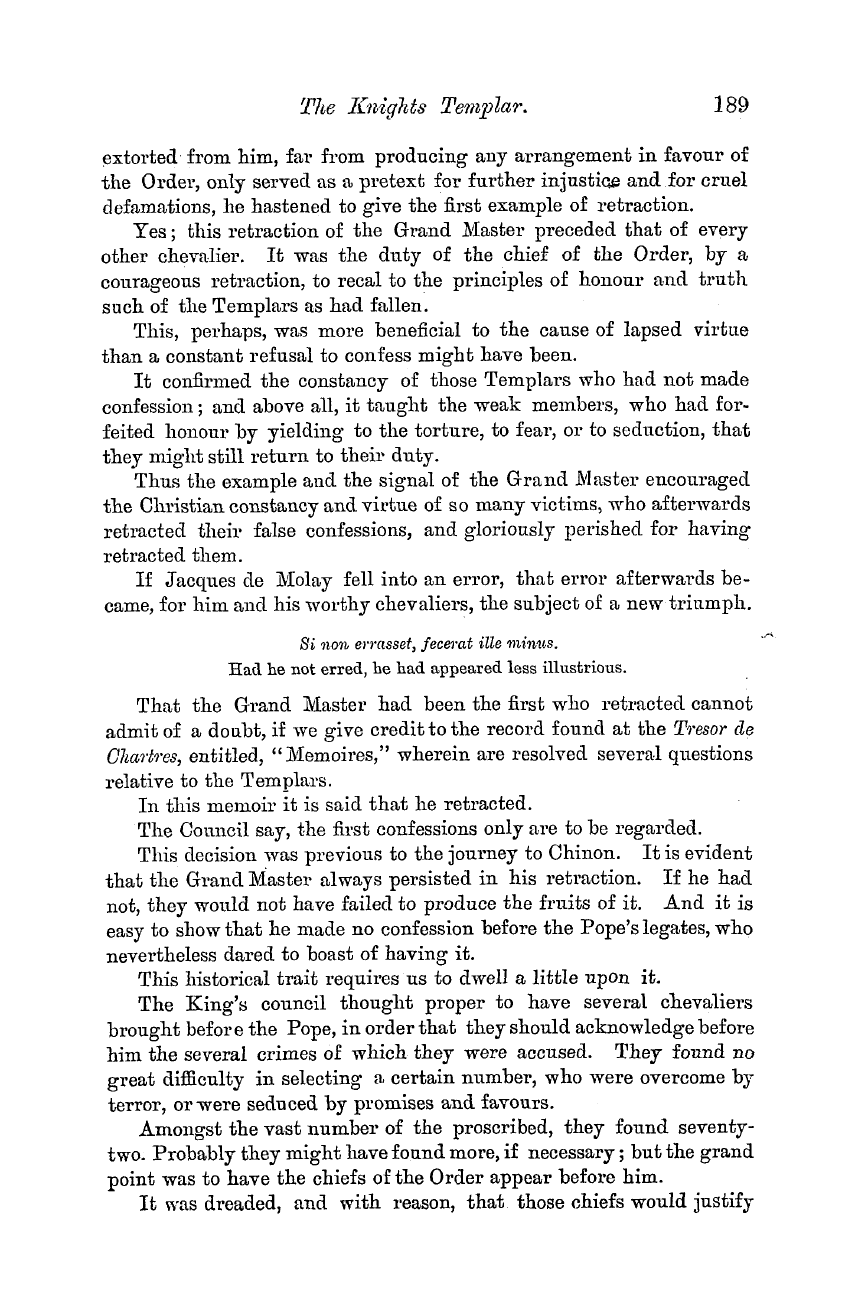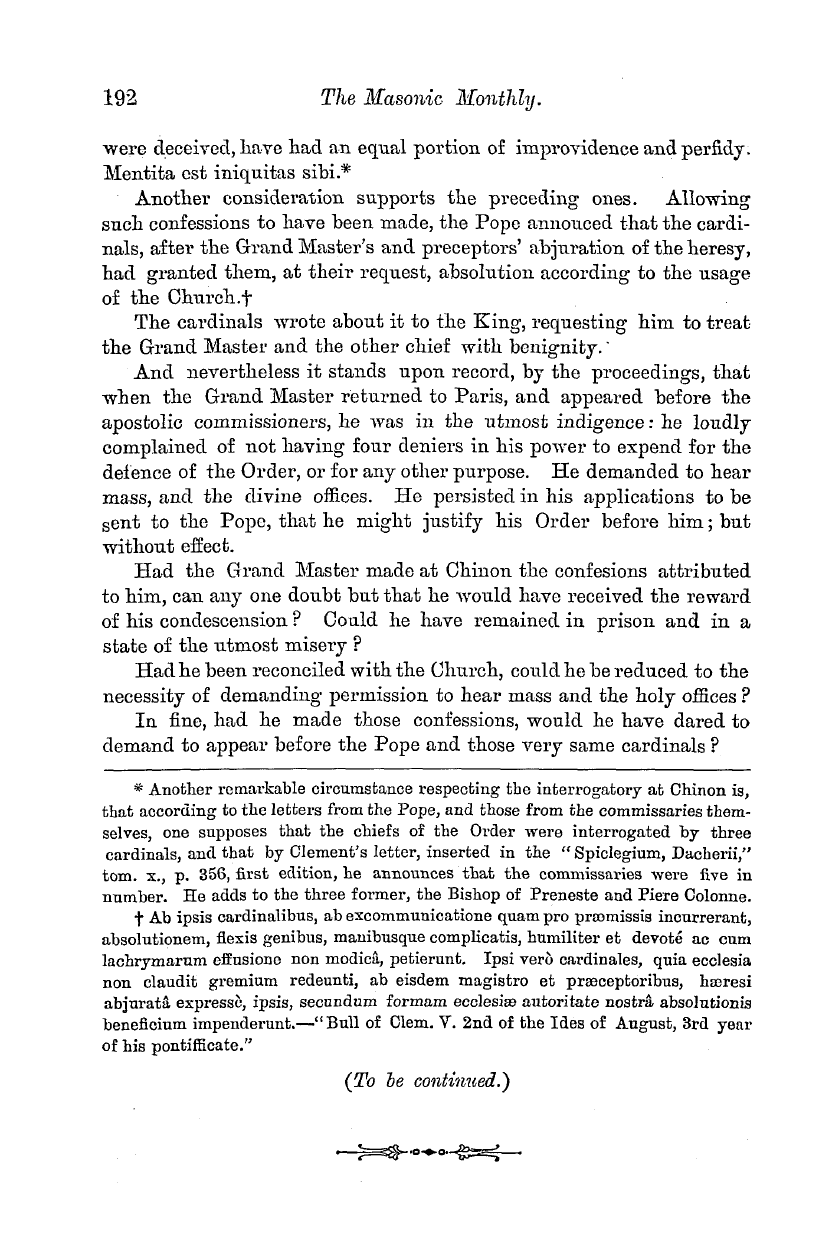-
Articles/Ads
Article FAR EASTERN ANCIENT RITES AND MYSTERIES. ← Page 2 of 3 →
Note: This text has been automatically extracted via Optical Character Recognition (OCR) software.
Far Eastern Ancient Rites And Mysteries.
from the disgrace of a public execution ; and a weak conqueror would hardly risk making a martyr of a popular hero . Niwa Naga-hide , lord of the province of Noto , put an end to his miseries by the same process , as he was subject to violent spasmodic fits , A . D . 1586 .
In A . D . 1591 , Hidetsuga , having been accused of attempting to poison his uncle , Hideyoshi ( Taiko ) , who had adopted him , and failing to prove his entire innocence , chivalrously immolated himself . A most celebrated case is that of Asa no Takumi no Kami , who was sentenced to Setzu puku for drawing his sword and wounding a
superior officer of the Imperial household , Avhilst on duty within the palace , in a fit of jealously and anger . This was in A . D . 1699 , and upon this historical event , and the vendetta that was carried to a successful issue , has been founded the celebrated story of the fortyseven loyal retainers ( renin , or outlaws ) which Mr . Milford relates in his " Tales of Old Japan . " F . V . Dickens also published a version of the same drama .
Instances are on record of loyal and devoted retainers having taken all the blame upon themselves , and expiated their lord and master ' s offence , whether of omission or commission , by this rite . There are also cases of men who have been insulted , and failing to obtain satisfaction , and unable to revenge themselves , have equally
submitted themselves to it . The usual reason of this act was to expiate some error , thereby removing from their children the stigma that would otherAvise rest on dishonour , especially if a public execution was thereby avoided ior a political or other crime .
No doubt some of our readers have seen illustrations of the ceremony in some of the many books containing what purport to be accounts of manners and customs of the Japanese . The dying men usually made some statement in the agony and death throe , often , indeed , composed a poem , as in the case of the Tosa men who were sentenced
to this death at Hiogo , some years ago , Avhen the representatives of the French and British governments were official witnesses of the execution . Should the man ' s physical power or courage fail , his head is lopped , off by an experienced swordsman , who is always stationed ready to perform his part if called upon ; but usually a friend or
partizan did this kindness for the victim and put him out of his misery . The ceremonies comprised an admixture of Budhist and also of ancient Shinto ( DiAdne Path ) rites . The curious form of the little table upon which the dirk was laid , and the way in which it was handed to the victim , are especially worthy of enquiry and study by our brethren .
Note: This text has been automatically extracted via Optical Character Recognition (OCR) software.
Far Eastern Ancient Rites And Mysteries.
from the disgrace of a public execution ; and a weak conqueror would hardly risk making a martyr of a popular hero . Niwa Naga-hide , lord of the province of Noto , put an end to his miseries by the same process , as he was subject to violent spasmodic fits , A . D . 1586 .
In A . D . 1591 , Hidetsuga , having been accused of attempting to poison his uncle , Hideyoshi ( Taiko ) , who had adopted him , and failing to prove his entire innocence , chivalrously immolated himself . A most celebrated case is that of Asa no Takumi no Kami , who was sentenced to Setzu puku for drawing his sword and wounding a
superior officer of the Imperial household , Avhilst on duty within the palace , in a fit of jealously and anger . This was in A . D . 1699 , and upon this historical event , and the vendetta that was carried to a successful issue , has been founded the celebrated story of the fortyseven loyal retainers ( renin , or outlaws ) which Mr . Milford relates in his " Tales of Old Japan . " F . V . Dickens also published a version of the same drama .
Instances are on record of loyal and devoted retainers having taken all the blame upon themselves , and expiated their lord and master ' s offence , whether of omission or commission , by this rite . There are also cases of men who have been insulted , and failing to obtain satisfaction , and unable to revenge themselves , have equally
submitted themselves to it . The usual reason of this act was to expiate some error , thereby removing from their children the stigma that would otherAvise rest on dishonour , especially if a public execution was thereby avoided ior a political or other crime .
No doubt some of our readers have seen illustrations of the ceremony in some of the many books containing what purport to be accounts of manners and customs of the Japanese . The dying men usually made some statement in the agony and death throe , often , indeed , composed a poem , as in the case of the Tosa men who were sentenced
to this death at Hiogo , some years ago , Avhen the representatives of the French and British governments were official witnesses of the execution . Should the man ' s physical power or courage fail , his head is lopped , off by an experienced swordsman , who is always stationed ready to perform his part if called upon ; but usually a friend or
partizan did this kindness for the victim and put him out of his misery . The ceremonies comprised an admixture of Budhist and also of ancient Shinto ( DiAdne Path ) rites . The curious form of the little table upon which the dirk was laid , and the way in which it was handed to the victim , are especially worthy of enquiry and study by our brethren .































































